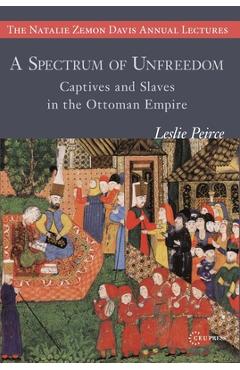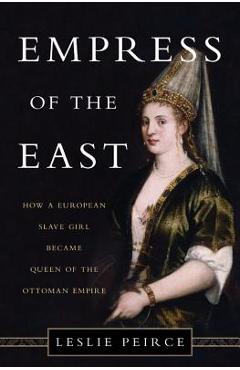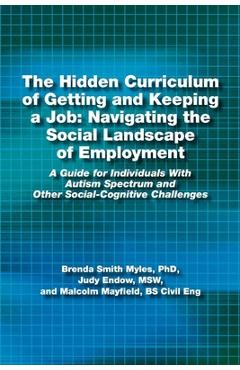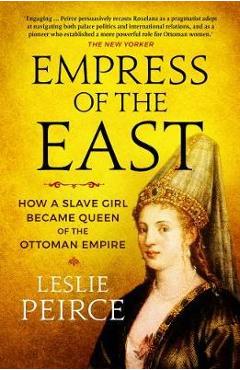A Spectrum of Unfreedom: Captives and Slaves in the Ottoman Empire - Leslie Peirce

Detalii A Spectrum of Unfreedom: Captives
libris.ro
91.42 Lei
101.58 Lei
History
Leslie Peirce
A Spectrum of Unfreedom: Captives - Disponibil la libris.ro
Pe YEO găsești A Spectrum of Unfreedom: Captives de la Leslie Peirce, în categoria History.
Indiferent de nevoile tale, A Spectrum of Unfreedom: Captives and Slaves in the Ottoman Empire - Leslie Peirce din categoria History îți poate aduce un echilibru perfect între calitate și preț, cu avantaje practice și moderne.
Preț: 91.42 Lei
Caracteristicile produsului A Spectrum of Unfreedom: Captives
Comandă A Spectrum of Unfreedom: Captives Online, Simplu și Rapid
Prin intermediul platformei YEO, poți comanda A Spectrum of Unfreedom: Captives de la libris.ro rapid și în siguranță. Bucură-te de o experiență de cumpărături online optimizată și descoperă cele mai bune oferte actualizate constant.
Descriere magazin:
Without the labor of the captives and slaves, the Ottoman empire could not have attained and maintained its strength in early modern times. With Anatolia as the geographic focus, Leslie Peirce searches for the voices of the unfree, drawing on archives, histories written at the time, and legal texts.Unfree persons comprised two general populations: slaves and captives. Mostly household workers, slaves lived in a variety of circumstances, from squalor to luxury. Their duties varied with the status of their owner. Slave status might not last a lifetime, as Islamic law and Ottoman practice endorsed freeing one\'s slave.Captives were typically seized in raids, generally to disappear, their fates unknown. Victims rarely returned home, despite efforts of their families and neighbors to recover them. The reader learns what it was about the Ottoman environment of the sixteenth and seventeenth centuries that offered some captives the opportunity to improve the conditions of their bondage. The book describes imperial efforts to fight against the menace of captive-taking despite the widespread corruption among the state\'s own officials, who had their own interest in captive labor. From the fortunes of captives and slaves the book moves to their representation in legend, historical literature, and law, where, fortunately, both captors and their prey are present. Without the labor of the captives and slaves, the Ottoman empire could not have attained and maintained its strength in early modern times. With Anatolia as the geographic focus, Leslie Peirce searches for the voices of the unfree, drawing on archives, histories written at the time, and legal texts.Unfree persons comprised two general populations: slaves and captives. Mostly household workers, slaves lived in a variety of circumstances, from squalor to luxury. Their duties varied with the status of their owner. Slave status might not last a lifetime, as Islamic law and Ottoman practice endorsed freeing one\'s slave.Captives were typically seized in raids, generally to disappear, their fates unknown. Victims rarely returned home, despite efforts of their families and neighbors to recover them. The reader learns what it was about the Ottoman environment of the sixteenth and seventeenth centuries that offered some captives the opportunity to improve the conditions of their bondage. The book describes imperial efforts to fight against the menace of captive-taking despite the widespread corruption among the sta

Produse asemănătoare

The Color of Roses: A Curated Spectrum of 300 Blooms - Danielle Dall\'armi Hahn
![]() libris.ro
libris.ro
Actualizat in 28/10/2025
195.3 Lei

Layla\'s Life, My Words: An insight into the world of a child with Foetal Alcohol Spectrum Disorder (FASD) - Shushma Jain
![]() libris.ro
libris.ro
Actualizat in 28/10/2025
105.95 Lei

Case Studies for the Treatment of Autism Spectrum Disorder, Paperback/Patricia A. Prelock
![]() elefant.ro
elefant.ro
Actualizat in 28/10/2025
216.99 Lei

Getting the Best Out of College for Students on the Autism Spectrum. A Workbook for Entering Further Education, Paperback/Rebecca Murphy
![]() elefant.ro
elefant.ro
Actualizat in 28/10/2025
122.99 Lei
Produse marca Leslie Peirce

Empress of the East: How a European Slave Girl Became Queen of the Ottoman Empire - Leslie Peirce
![]() libris.ro
libris.ro
Actualizat in 28/10/2025
190.47 Lei

A Spectrum of Unfreedom: Captives and Slaves in the Ottoman Empire - Leslie Peirce
![]() libris.ro
libris.ro
Actualizat in 04/11/2024
91.42 Lei


